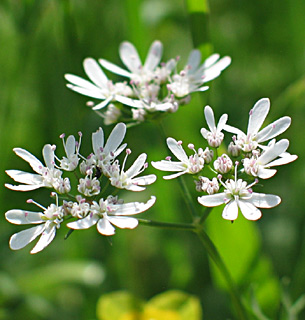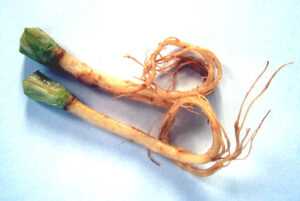As you will see, this newsletter is already pondering Purim thoughts, and with perfect timing Melissa told me about a new online store that may provide an excellent idea for your mishlochei manot. “Mashehu Tov” offers products that bring good into the world, including products crafted by people with special needs, ecological creations and fair-trade products. Check it out here.
Yiftah the bread baker is conducting a bread-tasting fest in Tel Aviv this Friday, February 25th, from 10:00 AM to 2:00 PM at the Chochmat Ha-Adama store, #74 King George St. For more details, email Yiftah or check this website. Bon appetite!
_______________________________
Our Own Lucky Charm
Last week, my six-year-old asked me to tell her the story of Esther (again). That’s what happens when Purim is so long in coming and it gets so hard to wait another month to dress up. We discussed the meaning of the name Purim – lot, fate, because of the lot that was drawn to determine the date to kill the Jews (which later became the date the Jews killed others!). And then I remembered that in our field we, too, have an herb that could be perfect for Purim. Please meet the “lucky charm of the field,” the coriander. Some would kill for it; others would rather be killed than eat it…
Almost every discussion about coriander begins with a sentence like “the world is divided into those who are crazy about it and those who despise it.”
Coriander’s Hebrew nickname, “the lucky charm of the field” was bestowed upon it by someone from Group One, I guess. The Aramaic scholar, Yonatan ben Uziel, identifies the coriander seed as having given the manna its shape, making it one lucky herb thereafter. The name “coriander” originates from the Greek word for bedbug, Koriannon, perhaps because of their similar scent. (In America, coriander leaves are called “cilantro,” from the Spanish name for the plant.)
Legends concerning the miraculous manna claim that when it was eaten, its taste corresponded with whatever the eater was craving at that given moment. The association with coriander may seem a little strange to some of you, but it is indeed a multi-talented seasoning herb. On the one hand, it adds a distinctive taste to salads and cooked items. On the other, it tones down the piquancy of spicy herbs, making it a mainstay of the Asian and South American cuisine. Coriander seeds are also a component in a magical delicacy, the sugarplum, which started out as sugar-coated coriander seeds.
Coriander belongs to the Umbelliferae family, sister to the dill, carrot, fennel and others. The family’s name was coined from the shape of its flowers, resembling small parasols or umbrellas. Little branches jut out of the main branch, and others emerge from them, creating a sort of schach. It is an annual plant. Unlike the biennial parsley, which can be harvested many times before it blooms, coriander only allows a limited number of harvests (1-3, depending on the season) before growing a blossom pole. In wintertime this process is slower, and in summer we sometimes can’t harvest it fast enough before it blossoms.
Coriander originated in the Mediterranean Basin, but today it is an honored guest in almost every kitchen in the world. Coriander is generously sprinkled over dishes in Iran, Georgia, the Caucasians, in Morocco and Arab countries, plus certain places in Africa. And of course, coriander is having a ball in India, China and Thailand, and in Mexico you would be hard pressed to find a dish that does not contain coriander.
Coriander is one of those streamline-built plants where you can make use of all its parts: the leaves, seeds, branches and even its root. The root can replace garlic and it is popular in the Thai kitchen especially, though it was once used as “bitter herbs” on the Seder plate. The leaves are the part you’re familiar with–the source of the dominant taste and smell, which is the bone of contention between lovers and loathers. The seeds, however, are not as strong. They’re sweeter and more aromatic, and they constitute an excellent seasoning herb for preserving and for slow-cooking.
Here is a look at the seeds, root and leaves:
If you don’t like lots of coriander, use it to season your oil. It’s gentler that way:
Fill a jar with two cups of coriander leaves, lightly warm up a vegetable oil (canola, sunflower, safflower, olive), and add to the jar. Seal jar for two weeks, after which you can remove the coriander stems or leave them in the oil, depending on your preference. (If you plan to keep them in the oil, chop leaves very thin before you fill the jar.)
Julius Caesar’s soldiers used coriander seeds and leaves to preserve meat. Modern researches found out why it worked: coriander contains antioxidants that prevent the decomposition of animal fat. It also has components that prevent the development of worms, bacteria and fungi that spoil the meat.
Coriander arrived in Israel many years ago. It is mentioned often in Talmudic literature, making it clear that it was already very popular during the Mishnaic and Talmudic eras. For expectant fathers and mothers, there is one source from Tractate Ktuvot that promises “fat and healthy boys” to mothers who eat coriander. One Thousand and One Nights tells of a merchant who was childless for 40 years and then became cured by drinking a potion that includes coriander… (Who knows?)
I found no scientific evidence to support supernatural attributes in the realm of childbearing, but where digestion is concerned, coriander is a well-known remedy. Add coriander to legume dishes to reduce gas that can be created by the beans. In folk medicine, coriander is known to ease insomnia and anxiety. In conventional medicine, its seeds are used as a component in laxatives and to remedy intestinal diseases (indigestion, gas and the prevention of spasms in the gastrointestinal tract). For a medicinal tea, pour 1 liter boiling water over 5 tablespoons of coriander seeds, sweeten with honey, and let steep for 5 minutes. Drink 1-3 cups a day.
The prime medicinal use of the coriander is from ethereal oil extracted from the fruits of the plant. The main oil, coriandrol, is used to make vitamin A capsules and as a medicine for constipation and to cleanse the stomach (for instance, before x-rays and surgery). The same quality that explained the Roman soldiers’ success in preserving meat is probably what helps kill intestinal worms, bacteria and parasitic fungus (like the infamous E coli). Recent research has found that while it is treating intestinal activity, coriander also binds itself to toxins and removes them from the body, making it efficient in cleansing the body of such toxic metals as mercury, lead and aluminum.
Another attribute of coriander has been known in folk medicine for years – it helps treat diabetes. Now there is scientific support. Research has found insulin-releasing and insulin-like activity in coriander. It has been proven to be Hypolipidemic, i.e., reducing the amount of fat in the blood, thus preventing bad cholesterol and assisting in the prevention of diseases of the blood vessels.
Tips and suggestions for cooking and storing coriander:
-
To keep a bundle of coriander fresh, do not wet the leaves. Place it in a sealed plastic box and store in the refrigerator for a week and more. Wash only before use.
-
Spices made of dried, chopped coriander leaves are scentless. But also tasteless. Use fresh leaves.
-
Coriander leaves and seeds cannot substitute for one another in recipes. They taste different!
-
Add coriander to a dish only at the very end of cooking. Extended cooking dulls the taste (unless that’s your intention…)
Having read the important and interesting qualities of the “lucky charm of the field,” coriander lovers can simply rub a leaf, inhale the aromatic scent and add it to any salad or dish. But perhaps some of the loathers will decide to try a V’Nahafocho in honor of the Purim spirit, and add some of this wonderful manna to his/her plate.
May we have much happiness, health and abundant rain!
Alon, Melissa, Bat Ami and the Chubeza team
_____________________________
What’s in this Week’s Boxes?
Monday: Lettuce, beets, parsnips, scallions, white cabbage, celery, tomatoes, cucumbers, fennel or kohlrabi, broccoli, fava beans or sweet peas (small boxes only)
In the large box, in addition: green garlic, cauliflower, tot soy, carrots
Wednesday: fennel, parsley root, cucumbers, scallions, tomatoes, carrots, Swiss chard, cabbage – green or red, lettuce, broccoli, daikon
In the large box, in addition: cauliflower, cilantro, beets
And there’s more! You can add to your basket a wide, delectable range of additional products from fine small producers of these organic products: granola and cookies, flour, sprouted bread, sprouts, goat cheeses, fruits, honey, crackers. You can learn more about each producer on the Chubeza website. The attached order form includes a detailed listing of the products and their cost. Fill it out, and send it back to us to begin your delivery soon.
________________________________
RECIPES WITH LOTS OF CORIANDER:




